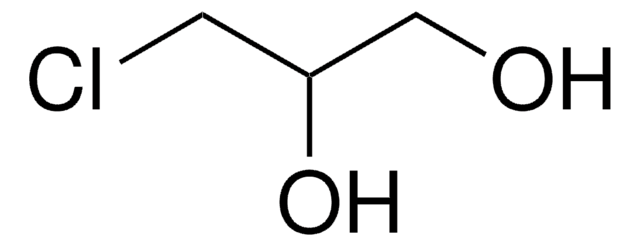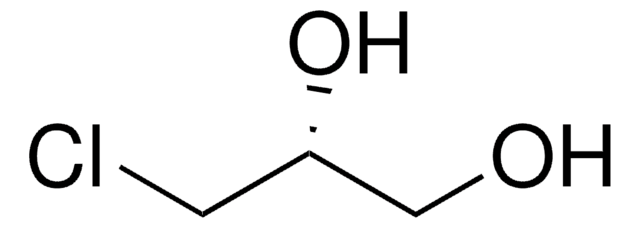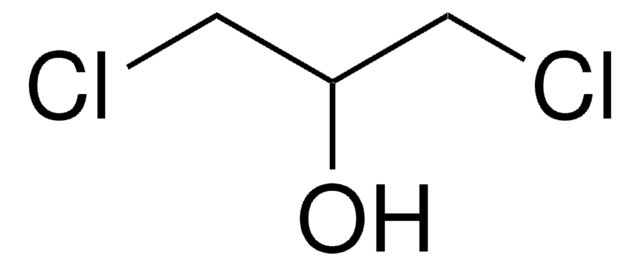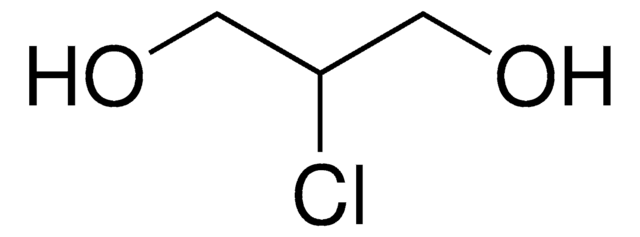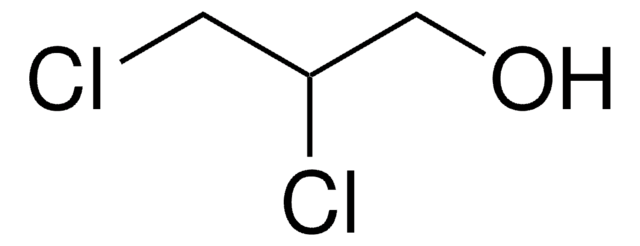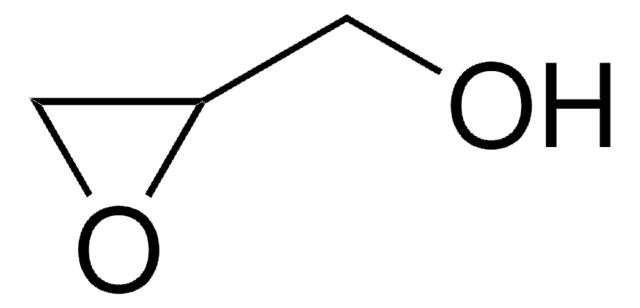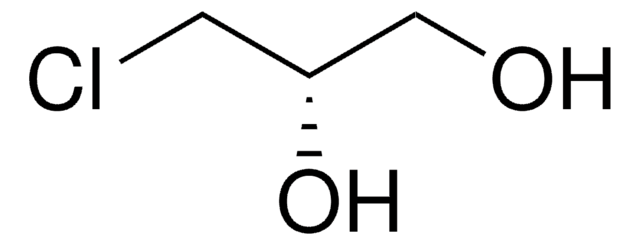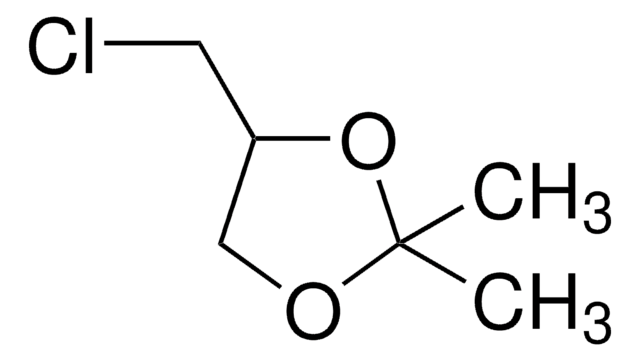107271
(±)-3-Chloro-1,2-propanediol
98%
Sinónimos:
α-Chlorohydrin, α-Glycerol chlorohydrin, α-Monochlorohydrin, 3-MCPD
About This Item
Productos recomendados
presión de vapor
0.04 mmHg ( 25 °C)
Análisis
98%
índice de refracción
n20/D 1.480 (lit.)
bp
213 °C (lit.)
solubilidad
H2O: soluble
alcohol: soluble
diethyl ether: soluble
densidad
1.322 g/mL at 25 °C (lit.)
cadena SMILES
OCC(O)CCl
InChI
1S/C3H7ClO2/c4-1-3(6)2-5/h3,5-6H,1-2H2
Clave InChI
SSZWWUDQMAHNAQ-UHFFFAOYSA-N
¿Está buscando productos similares? Visita Guía de comparación de productos
Descripción general
Aplicación
Acciones bioquímicas o fisiológicas
Palabra de señalización
Danger
Frases de peligro
Consejos de prudencia
Clasificaciones de peligro
Acute Tox. 2 Inhalation - Acute Tox. 3 Oral - Carc. 2 - Eye Dam. 1 - Met. Corr. 1 - Repr. 1B - Skin Irrit. 2 - STOT RE 1 - STOT SE 1
Órganos de actuación
Kidney, Testes
Código de clase de almacenamiento
6.1A - Combustible acute toxic Cat. 1 and 2 / very toxic hazardous materials
Clase de riesgo para el agua (WGK)
WGK 3
Punto de inflamabilidad (°F)
235.4 °F - closed cup
Punto de inflamabilidad (°C)
113 °C - closed cup
Equipo de protección personal
Eyeshields, Faceshields, Gloves, type ABEK (EN14387) respirator filter
Certificados de análisis (COA)
Busque Certificados de análisis (COA) introduciendo el número de lote del producto. Los números de lote se encuentran en la etiqueta del producto después de las palabras «Lot» o «Batch»
¿Ya tiene este producto?
Encuentre la documentación para los productos que ha comprado recientemente en la Biblioteca de documentos.
Los clientes también vieron
Nuestro equipo de científicos tiene experiencia en todas las áreas de investigación: Ciencias de la vida, Ciencia de los materiales, Síntesis química, Cromatografía, Analítica y muchas otras.
Póngase en contacto con el Servicio técnico